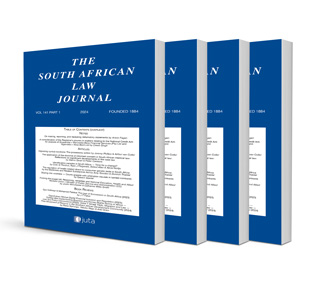No double-dipping: Rethinking the tests for duplication of convictions

No double-dipping: Rethinking the tests for duplication of convictions
Author Scott Roberts
ISSN: 1996-2177
Affiliations: Teaching Assistant, Department of Private Law, University of Cape Town
Source: South African Law Journal, Volume 136 Issue 3, p. 489-512
Abstract
South African courts have long recognised duplication of convictions (or ‘splitting of charges’) as unacceptable. However, determining when a duplication of convictions has occurred is a troublesome matter that has led to much confusion and disagreement. This uncertainty has led to our courts’ prescribing reliance on the standard of ‘common sense’ to ascertain whether there has been a duplication of convictions in a given case, both to guide the application of other legal tests and as a principle to fall back on when those tests yield indeterminate outcomes. The reasons for the rule against duplication of convictions relate to moral concerns about the justifications for an act of punishment. Retributivist theories of punishment require the identification of a desert basis for punishment, to render punishment justified. It is possible to identify unique desert bases for punishment, both in a temporal sense and according to the nature of the interest of the victim violated by the criminal act. Identifying unique interest violations is a more effective means of identifying duplications of convictions than the flawed method currently employed by our criminal courts.